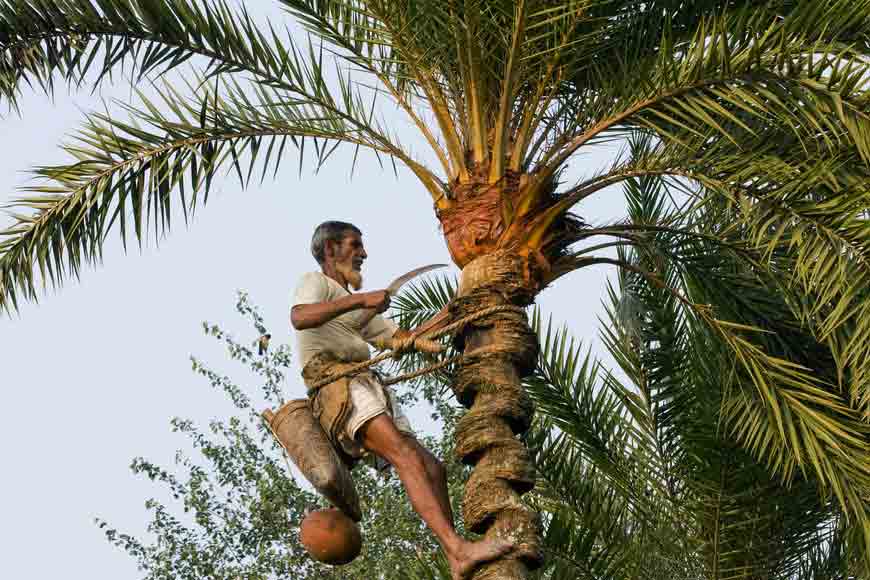How North Bengal villagers are taking lessons from Bangladesh

Gur has always been a winter savory of Bengal, linked to the tastes of generations of Bengali who would die for that patali and jholagur along with the Nolen gurer Sandesh! Residents of Gajaldoba of North Bengal had seldom paid attention to the large number of date palm trees growing in abundance in their area.But now these very plants are seen as harbinger of financial stability by locals. Aided by expert jaggery makers from Bangladesh, the people of Gajaldoba are learning the process of gur-making first-hand.

Master jaggery makers from Rajshahi district of Bangladesh discovered large number of date palm plants growing in this area and saw this as an opportunity to make money. They have been flocking to Gajaldoba and nearby areas annually for the last couple of years. They extract the juice of the date palm plants and make jaggery in make-shift stalls and sell the product locally. Their gur is gradually becoming popular in Jalpaiguri and the Dooars region. Locals are realizing their trees can be utilized for generating income.

The people of Gajaldoba have already made a name for themselves for adopting scientific agricultural and pisciculture techniques, which have yielded bumper crops. Gajaldoba’s volume of catch, competes with such big-wig centres such as Raigunj and Balurghat. This place is fast gaining ground for its bumper produce of vegetables and vies with established players like Dhoopguri. Locals are keenly observing the experts from Bangladesh and learning the production process from close quarters. Most men are confident they will be able to make jaggery independently soon and join the fray.
At least 25 expert jaggery makers have been coming to India for their annual sojourn during the month of Ashwin (mid-September). Poush and Magh(December to mid February) are the two months when gur is made. These men make Gajaldoba their temporary home during this time. They make around 40 kgs of gur per day. The popularity of their product has reached as far as Siliguri and there is a rising demand for the jaggery. Previously, date palm jaggery reached north Bengal from the plains of south Bengal but the quality of that product has deteriorated and consumers often complain of spurious gur being sold. Now the people of north Bengal are more than happy to get locally made genuine product.

Locals have realized that the most challenging task of this gur making process is taking proper care of the palm plants that give them the juice. The process starts in September. By late October the plants are ready to be harvested. In mid-December, about 15 litres of palm juice is extracted from each plant. The jaggery makers from Bangladesh come to Gajaldoba with valid papers. They work in groups and set up temporary workshop-cum-shops.









